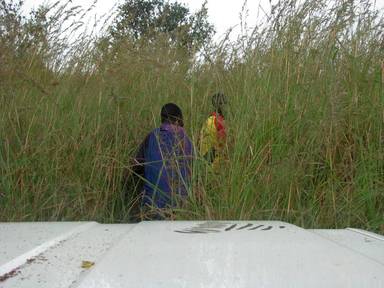I admire the artist Renzo Martens, he is responsible for the Institute for Human Activities.
I’ll now quote from a press release from this institute:
‘In 2012, the Institute for Human Activities (IHA), a foundation established in the Netherlands, Belgium and the Democratic Republic of the Congo began A Gentrification Program on a former Unilever plantation in Congo, 800 kilometers from Kinshasa, on a tributary of the Congo River.
For the first time since the founding of the IHA’s first settlement three years ago, the IHA presents three solo shows entirely dedicated to the IHA and its activities:
May 1 - June 7 The Matter of Critique, KW Institute for Contemporary Art, Berlin, opening May 1, 5-9 pm May 1 - July 25 A Lucky Day, KOW, Berlin, opening May 1, 6 pm May 2 - June 6 A New Settlement, Galerie Fons Welters, Amsterdam, opening May 2, 5-7 pm
In the summer of 2013, Canadian palm oil operator Feronia forced the IHA to leave its settlement and the communities with whom it had been working. From its New Settlement in exile, the IHA continues its Criticial Curriculum, during which plantation workers from the Cercle d'Art des Travailleurs de Plantations Congolaises (CATPC) use river clay to create critical self-portraits and sculptures.
In the framework of the Critical Curriculum, public lectures have been organized. Amongst others, plantation worker and artist Jeremie Mabiala Massamba talked about the artist’s responsibilities, Eléonore Hellio and Michel Ekeba presented their ongoing project Kongo Astronauts, and art critic Laurens Otto gave a lecture on the history of the white cube.
The workers talked extensively about their fears and dreams, and worked on forming critical concepts to talk about their sculptures and art in general. Most of these workers earn less than one dollar a day and have no access to clean water, electricity or sanitation. The sculptures reflect their lives and their relationship to currency, the mystery of money – which some people appear able to create seemingly out of thin air, and of which they themselves do not have any, or definitely not enough, to feed their children.
The original clay sculptures of Mathieu Kasiama, Mbuku Kimpala, Emery Mohamba, Daniel Manenga, Cedrick Tamasala, Dionga Bismar, Jeremie Mabiala and Thomas Leba were scanned and transported digitally to Amsterdam. There, molds were made and chocolate sculptures were cast in the very cocoa that Congolese plantations workers have been producing for the global market since the last century.
Proceeds from sales of these sculptures go directly to individual authors and the CATPC. By adding content, emotions and critical thinking to the chocolate, the profits of the plantation workers increase by several thousand percent per gram of chocolate. In this way plantation workers, who cannot provide sustenance with plantation labor, are now able to live from their artistic vision on plantation labor.’
For more information click here.
This could be a great gift for the workers in the DRC and art lovers in the Western world.
If we do believe in sustainable art edible art is the solution.
I applaud the Institute for Human Activities, and I hope that art and chocolate lovers in the Western world will buy (and eat) these sculptures on a massive scale.
